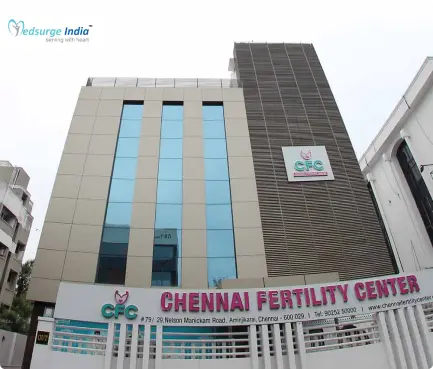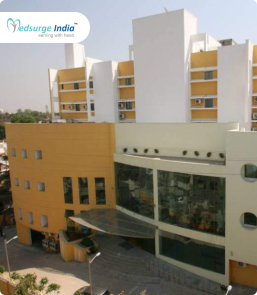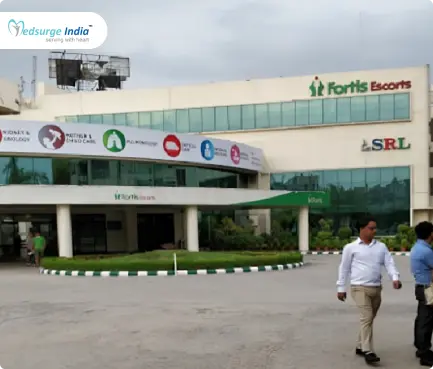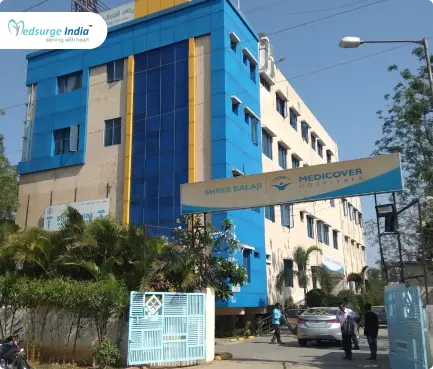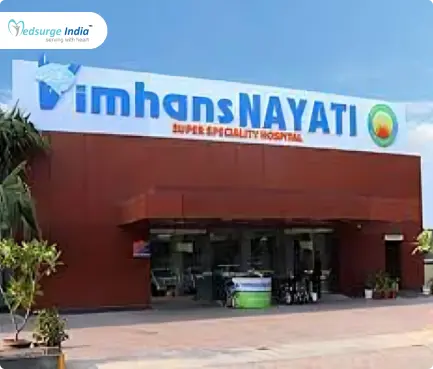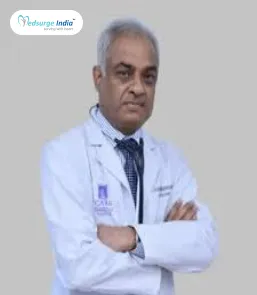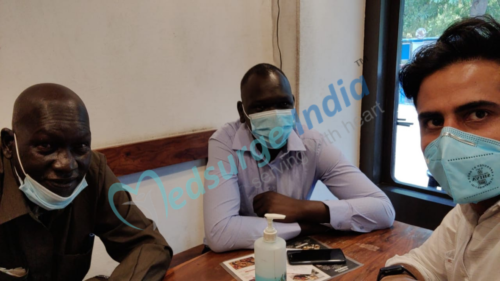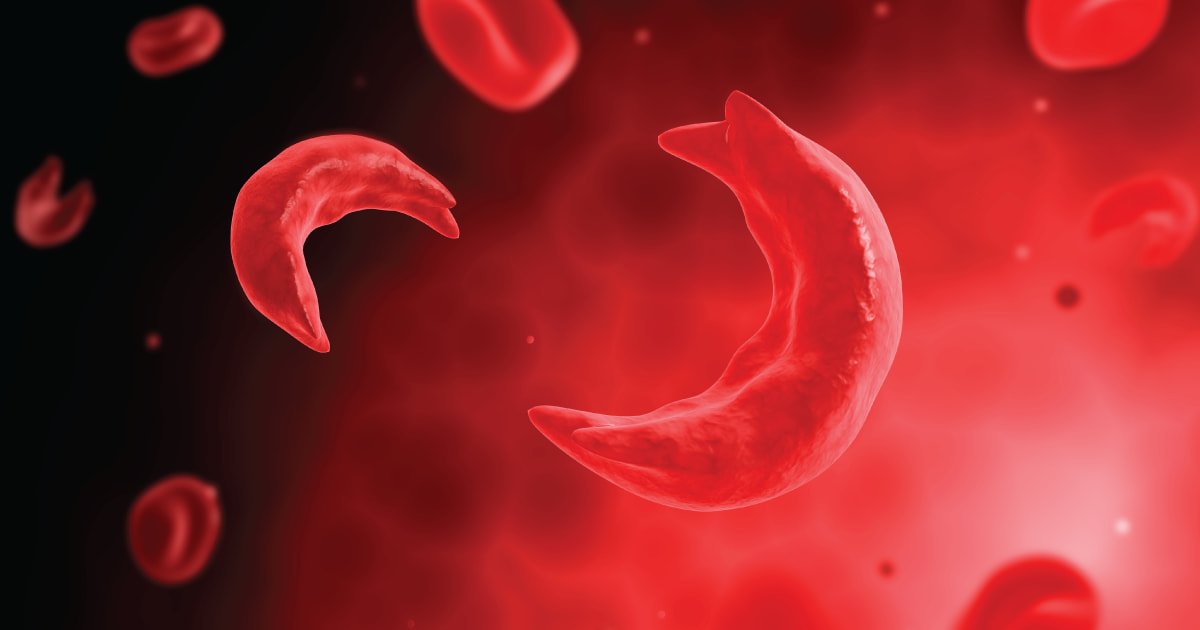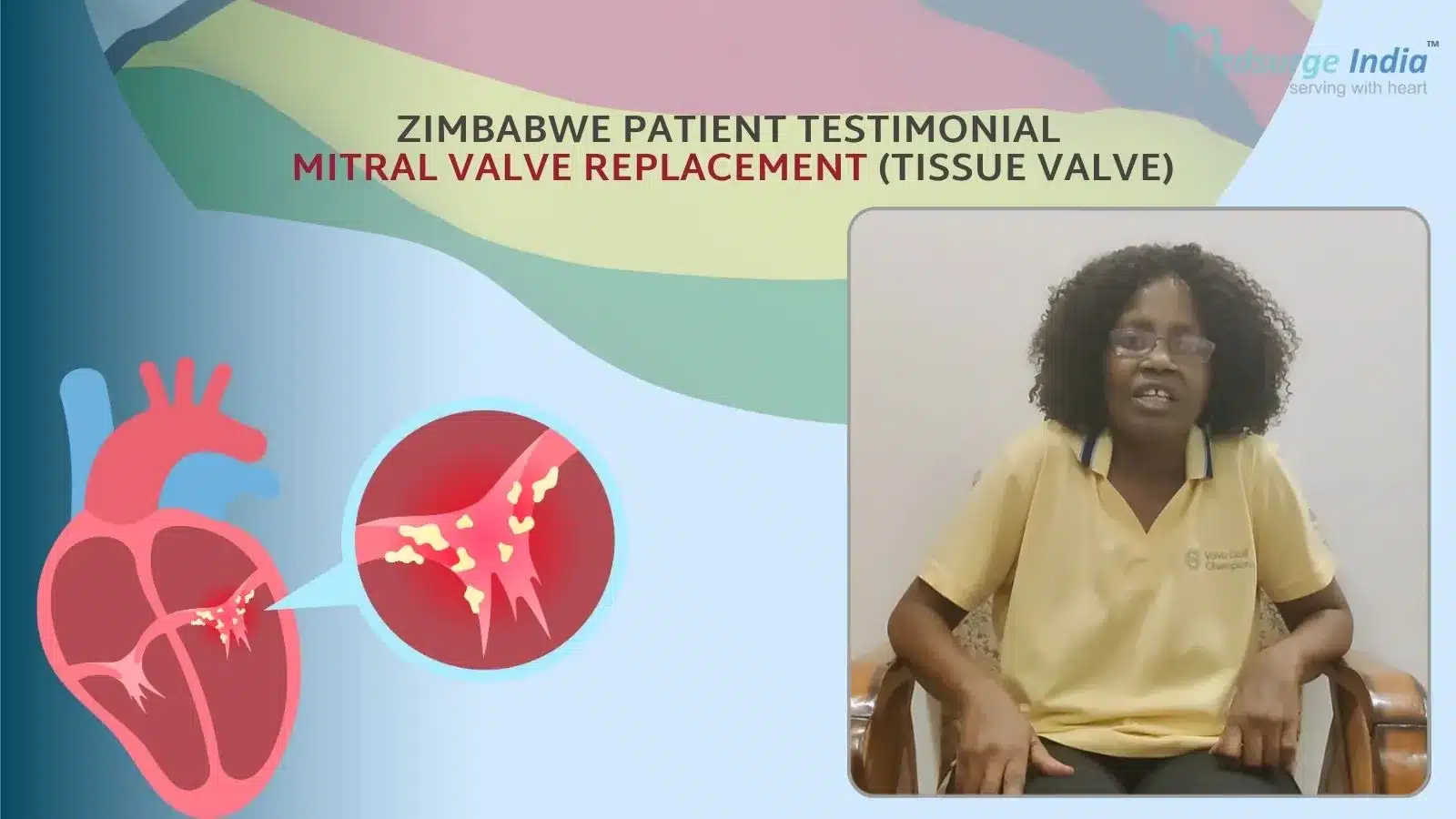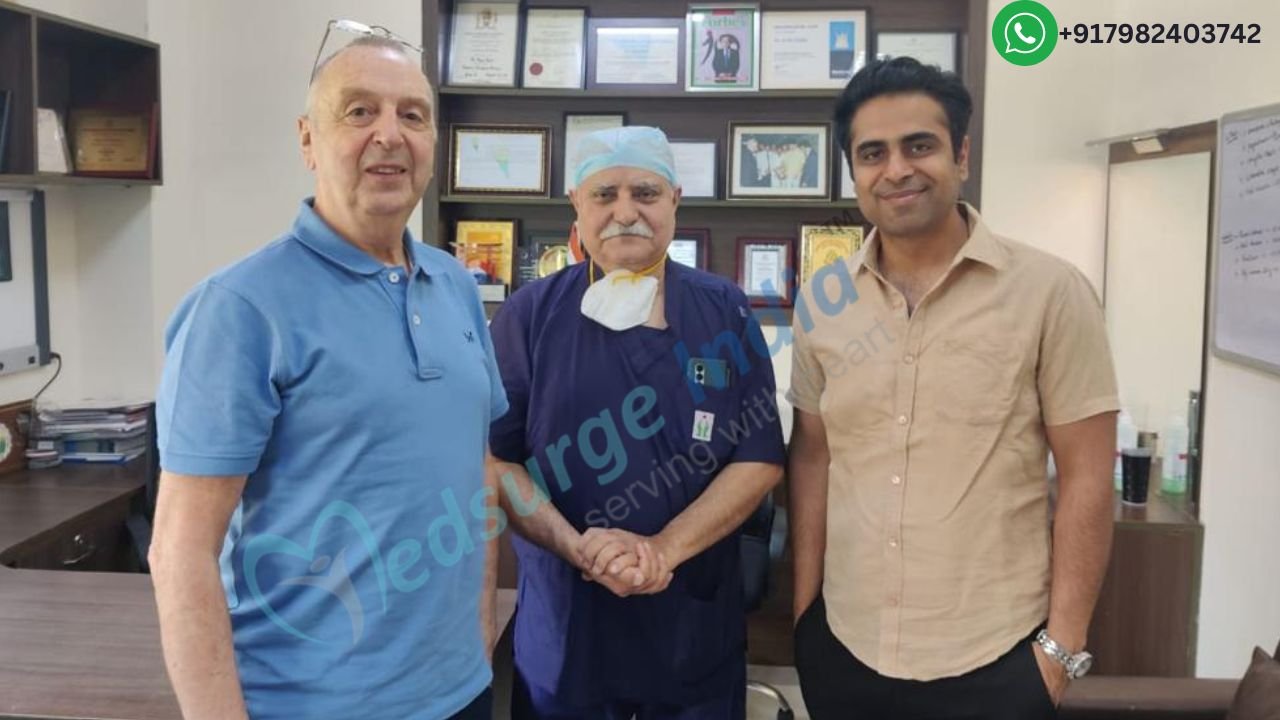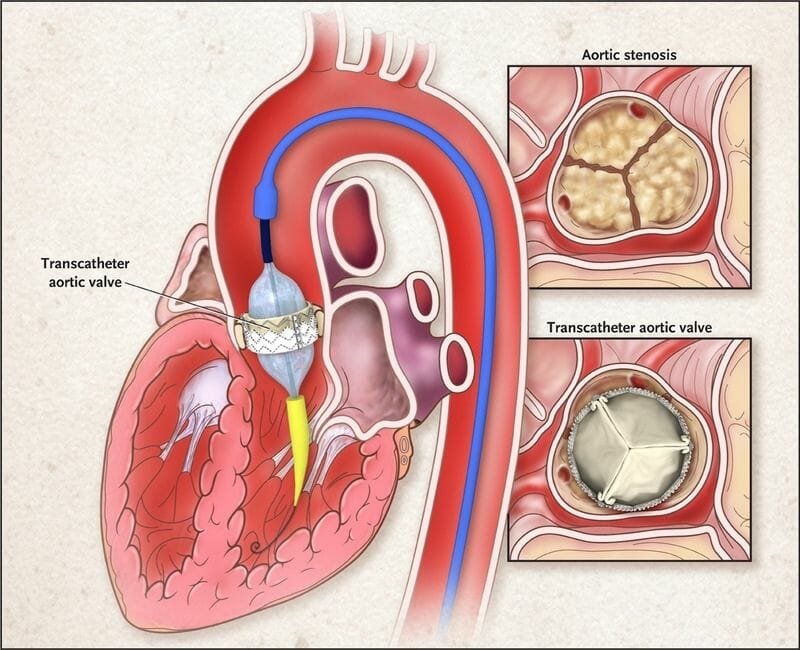
Overview
Treatment for issues related to the heart’s aortic valve involves open surgery known as an aortic valve replacement. The aortic valve governs blood flow from the heart to the rest of the body. Aortic valve replacement entail taking out the malfunctioning or damaged valve and installing a brand-new valve fashioned from synthetic material or animal tissue in its place. It is a big procedure that is not suitable for everyone and might take a long time to recover from.
Aortic Valve Replacement Cost in India
Aortic Valve Replacement Cost in India ranges from INR 4,30,000 to INR 5,40,000 (5200 USD to 6500 USD). This price typically includes necessary preoperative tests, and the surgery itself. However, please note that accommodation and transfers are not included in this cost.
Cost of Aortic Valve Replacement in Different Cities in India
| Cities | Starting Price |
| Delhi | 4700 USD |
| Gurgaon | 5100 USD |
| Noida | 4500 USD |
| Mumbai | 5200 USD |
| Hyderabad | 4800 USD |
| Chennai | 5250 USD |
| Kolkata | 4600 USD |
| Bangalore | 5300 USD |
Note: Keep in mind that the aforementioned cost provided is solely for the treatment. The overall cost of Aortic Valve Replacement in India will be determined based on several factors.
Factors That Can Affect Aortic Valve Replacement Cost in India
Various factors can affect the cost of Aortic Valve Replacement in India. Your budget is greatly impacted by numerous elements that fail under pre and post-treatment costs. Below are the various factors that can affect the cost of Aortic Valve Replacement in India.
- Medication costs: Certain medicines can influence the overall cost of Aortic Valve Replacement.
- Patient Condition: The complexity of the disease along with the patient’s overall health can affect the duration of treatment, impacting the cost.
- Duration of treatment: Longer treatment courses involving multiple visits can lead to higher cumulative costs.
- Geographical location: Cost can vary widely depending on the region in India.
- Hospitalization expenses: The length of hospital stay and the level of nursing care required by the patient can add to the treatment expenses.
- Government policies and subsidies: Government healthcare schemes and subsidies can reduce out-of-pocket expenses for patients, affecting the affordability of Aortic Valve Replacement.
- Medical tourism packages: Curated packages for international patients can include various services at a bundled cost, influencing the overall expense of treatment in India.
- Hospital reputation and infrastructure: Prestigious hospitals with state-of-the-art facilities may charge more for their services.
- The expertise and experience of medical professionals: Cardiac surgeons with extensive experience and recognition often command higher fees, contributing to the treatment cost.
- The type and frequency of diagnostic procedures: Regular monitoring with advanced imaging and laboratory tests can increase treatment costs due to the high price of these diagnostic methods.
- The choice of treatment modality: Opting for newer or more advanced treatment options or precision medicine can be more expensive than traditional approaches.
For the treatment of Aortic Valve Replacement Cost in India, the country offers exceptional medical services and facilities to patients who come for treatment in India also their facilities rival those of well-known healthcare centers worldwide. Accommodation, meals, and transportation expenses are also covered.
We at, Medsurge India ensure that patients will receive the most affordable Aortic Valve Replacement Cost in India and with the expertise of highly qualified doctors. Furthermore, a foreign patient can save up to 30-40% of the cost in India when compared to their native countries.
More About Aortic Valve Replacement
An Aortic Valve Replacement is a type of open-heart surgery used to treat aortic valve problems in the heart. It requires removing and repairing a defective or damaged valve. The damaged valve is removed during this surgery and is replaced with an artificial valve. The removal of the valve is mostly open-heart surgery, and minimally invasive surgery or catheter procedure may be necessary in a few cases.
- Aortic stenosis: obstructing the flow of blood out of the heart as the opening of the valve becomes narrower.
- Aortic Regurgitation: When the valve is leaky, aortic regurgitation allows blood to flow back into the heart.
Diagnosis Tests to be Performed
- The principal test for diagnosing heart valve disease is echocardiography (echo).
- Transesophageal Echo, or TEE, to give your heart a better picture.
- Electrocardiogram (ECG) for the detection of irregular heartbeat and prior heart attack symptoms.
- Chest X ray-to see if the heart or lung fluid or heart calcium depositors are swollen.
- Cardiac catheterization, stress monitoring, or cardiac MRI help your doctor determine the seriousness of your condition so that your treatment can be scheduled.
Different Types of Aortic Valve Surgery
- Open Aortic Valve Replacement via Sternotomy, in which surgery replaces the damaged aortic valve.
- The replacement valve is directed into position through the blood vessels rather than through a large incision in the abdomen
- Transcatheter Aortic Valve Implantation (TAVI).
- Minimally Invasive Cardiac Surgery (MICS)
You may also be interested to know about Heart Bypass Surgery CABG Cost in India
Get Free Cost Estimation
Procedure
Aortic Valve Replacement Procedure
Before the Procedure
- Normal blood checks and tests to check surgical readiness.
- The patient was informed of the treatment and aftercare.
During the Procedure
- The treatment was carried out under general anesthesia.
- Insertion of the IV line, insertion of the breathing tube, and inserting the catheter in the bladder.
- The surgeon removes the sternum to reveal the pericardium in the center of the chest, then opens the pericardium to expose the heart.
- Tubes are used to channel the blood into a system that takes over the work of the heart and lungs during the procedure, linking the heart to the heart-lung machine.
- The heart is stopped and blood is extracted temporarily, the aortic valve is still and helps the surgeon to see it.
- To see the aortic valve, the surgeon opens the aorta, makes an incision along the edge of the damaged valve, and removes it.
- The surgeon then seals the aorta with stitches, allowing blood to flow into the heart to check the operation of the heart, giving the heart an electrical shock to restart the heart if necessary.
- Temporary surface pacemaker wires to ensure regular heart rhythms.
After the Procedure
- Usually, after removing the aortic valve, you will need to remain in the hospital for about a week.
- For the first day or two after your procedure, you will be held in the intensive care unit (ICU) before transferring to the surgical ward.
- You will be closely monitored for the movement of your heart, lungs, and body functions, wires attached to sensor pads to track your heart rate, blood pressure and blood flow, and the flow of air through your lungs.
- They’ll give you painkillers.
- You would be able to position a tube attached to a ventilator before you can breathe.
- Several tubes and monitors can be connected to you.
- Tiny tubes from your chest to pump out any blood or fluid build-up. Draining tube.
- Pacing wires will be placed near the chest drains, if appropriate, to regulate the heart rate.
Why Choose India for Aortic Valve Replacement Surgery?
India is one of the best healthcare service providers and provides the best treatment which is on par with other top countries. These are some reasons why international patients choose India as a top destination as per their budget and treatment.
- Complete treatment transparency.
- Have the greatest cardiac specialists and surgeons.
- Known as the best according to international standards.
- Reasonable Price.
- Utilizing top-notch services to ensure infection-free status.
Why Medsurge India?
Medsurge India is a prestigious support system for patients looking for doctors, hospitals, and specialized treatments. We’ll find the most suitable medical options for you. Regarding your medical issues, our team will give you a list of certified, reputable, and trusted doctors and hospitals. Additionally, we offer a treatment strategy that fits your budget. Apart, we assist patients with obtaining travel authorizations, medical visas, and a multitude of other things.
Know More –
Top Cardiologists in India
The Most Important Frequently Asked Questions
Q: What Is Cardiac Anatomy?
The heart is a muscular organ that pumps blood into the body.
It consists of four chambers, the upper two right and left atrium chambers, the lower two right and left ventricles chambers. The atrium connects to the respective ventricle, the right ventricle connects to the pulmonary artery and the left ventricle to the aorta.
Q: Where Is the Aortic Valve and What Is Its Purpose?
- Between the left ventricle and the aorta, the aortic valve is located.
- The aortic valve opens as the heart contracts and blood from the left ventricle is pumped into the aorta.
- The aortic valve closes as the heart relaxes to stop blood from leaking into the left ventricle.
Q: Cusps, What Are They?
Cusps are functional components of valves, opening and closing flaps of tissue. There are three cusps of the aortic valve that open widely and close tightly.
Q: What Do You Understand About the Regurgitation of the Aortic?
The aortic valve may be leaky and does not close properly, allowing blood to leak back into the ventricle condition known as aortic regurgitation.
Q: What Is Stenosis of the Aortic?
The aortic valve does not open enough which restricts blood from the ventricle to the aorta condition called aortic stenosis.
Top Hospitals for Aortic Valve Replacement in India
Top Doctors for Cardiology And Cardiac Surgery
Dr. Dipankar Majumder
Senior Consultant
Experience: 13+ years of experience
Narayana Superspeciality Hospital, Amingaon, Guwahati
Guwahati, India
Dr. Varun Bhargava
Consultant
Experience: 18 years of experience
Ganga Care Hospital Limited, Nagpur
Nagpur, India
Dr. Abhisekh Mohanty
Consultant , MBBS, MD, DM
Experience: 16 years of experience
Continental Hospitals, Hyderabad
Hyderabad, India
Dr. Pradeep Kumar Shetty
HOD
Experience: 25 years of experience
Rajiv Gandhi University of Medical Science, Bangalore
Bangalore, India
Dr. Chandramukhi Dhiraj Sunehra
Consultant
Experience: 20 years of experience
Care Hospitals, Banjara Hills, Hyderabad
Hyderabad, India
Dr. S Radhakrishnan
Director
Experience: 40 years of experience
Fortis Escorts Hospital New Delhi
New Delhi, India
Dr. Mahendra Prasad Tripathy
Chief
Experience: 35 years of experience
Care Super Specialty Hospital, Bhubaneswar
Bhubaneswar, India
Dr. Jayanta Chakraborty
Associate Consultant
Experience: 10 years of experience
AMRI Hospital, Kolkata (Dhakuria)
Kolkata, India
Dr. Gaurav Agrawal
Senior Consultant
Experience: 19 years of experience
BLK Super Speciality Hospital, New Delhi
New Delhi, India
Dr. Swati Garekar
Senior Consultant
Experience: 31 years of experience
Fortis Hospital, Mulund, Mumbai
Mumbai, India
Dr. Durga Devi
Consultant
Experience: 10 years of experience
Prashanth Multi Speciality Hospital Chennai
Chennai, India
Dr. Vishal Agarwal
Head of Department , MBBS, MS, MCh
Experience: 17 years of experience
Gurgaon, India
Dr. Gundurao Harish Joshi
Consultant
Experience: 14 years of experience
Sri Jayadeva Institute of Cardiovascular Sciences and Research, Bangalore
Bangalore, India
Dr. Jagdeep Yadav
Principal Consultant
Experience: 18 years of experience
Max Super Specialty Hospital Gurgaon
Gurgaon, India
Dr. Ashok B Malpani
Senior Consultant
Experience: 33 years of experience
BM Birla Heart Research Centre Kolkata
Kolkata, India
Dr. Kailash A Jain
Senior Consultant DNB, MS, MBBS
Experience: 16 years of experience
Chennai, India










